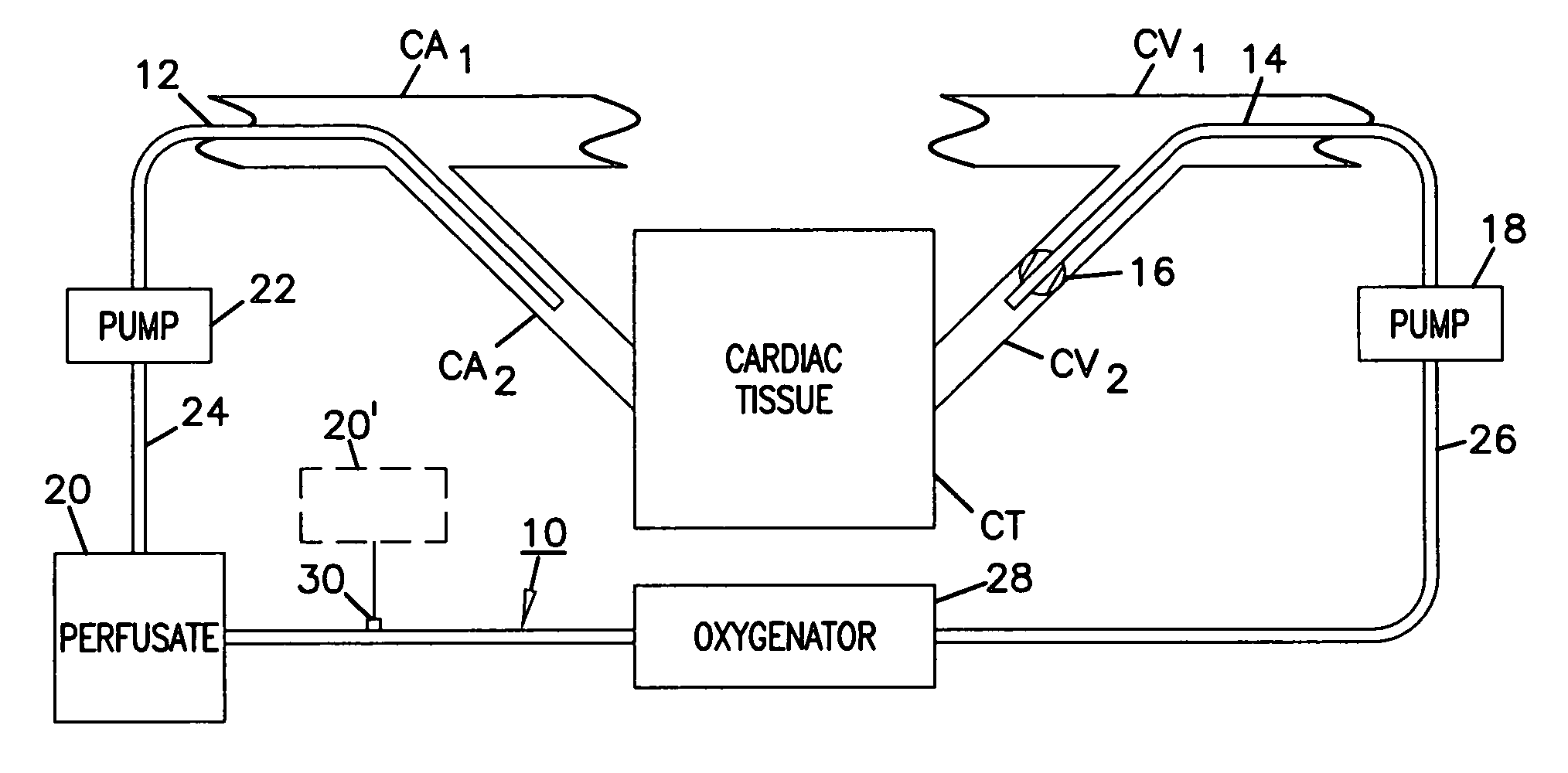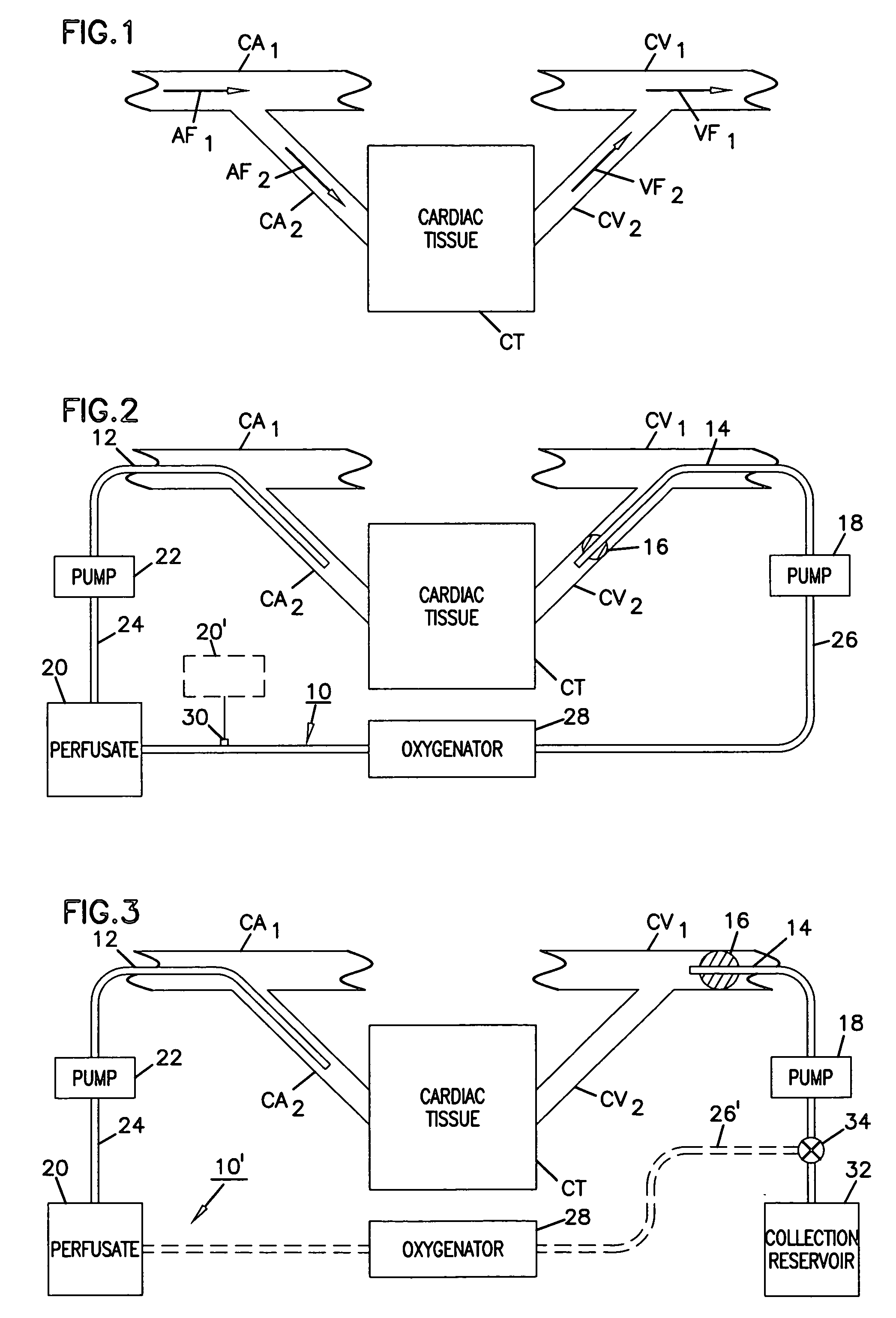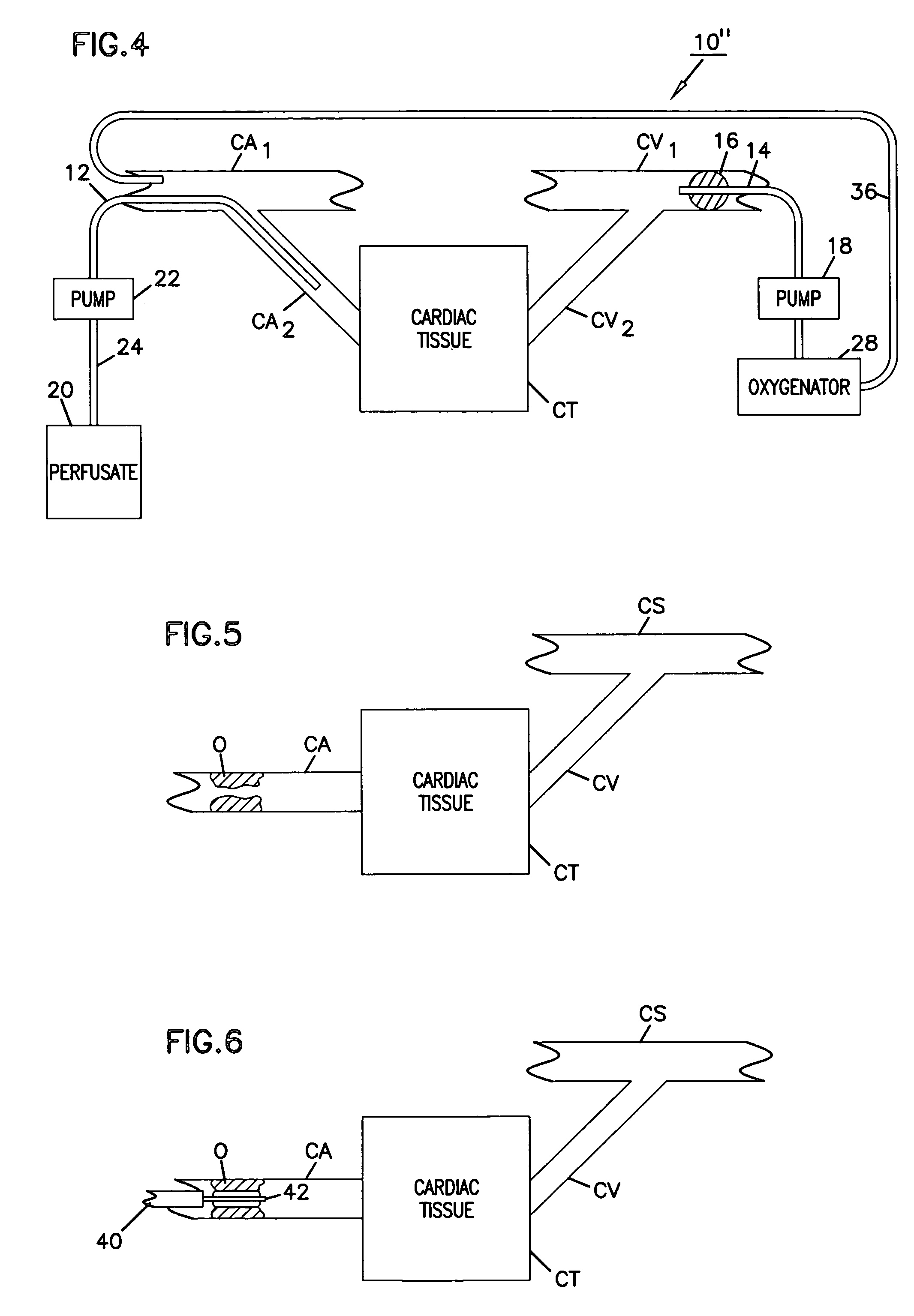Regional cardiac tissue treatment
a tissue treatment and heart technology, applied in the field of regional cardiac tissue treatment, can solve the problems of significant number of patients continuing to experience symptoms, tissue can become necrotic, and patients may develop heart failure or di
- Summary
- Abstract
- Description
- Claims
- Application Information
AI Technical Summary
Benefits of technology
Problems solved by technology
Method used
Image
Examples
Embodiment Construction
[0029]With reference now to the various drawing figures in which identical elements are numbered identically throughout, a description of the preferred embodiment of the present invention will now be described.
[0030]As will be more fully described, the present invention is most preferably used in concert with a percutaneous treatment for an occluded coronary artery. In such use, the present invention may be used to prevent formation of micro obstructions in tissue distal to the obstruction or to treat preexisting micro obstructions in such tissue. Further, the present invention may be used as an independent therapy to treat or prevent micro obstructions of coronary tissue and to treat infarcted tissue regions. Most of the following description describes the invention in an embodiment for treatment of microvascular obstructions. However, the principles and techniques described are also applicable to treating regional ischemia or infarction. Specifics of such treatments are later desc...
PUM
 Login to View More
Login to View More Abstract
Description
Claims
Application Information
 Login to View More
Login to View More - R&D
- Intellectual Property
- Life Sciences
- Materials
- Tech Scout
- Unparalleled Data Quality
- Higher Quality Content
- 60% Fewer Hallucinations
Browse by: Latest US Patents, China's latest patents, Technical Efficacy Thesaurus, Application Domain, Technology Topic, Popular Technical Reports.
© 2025 PatSnap. All rights reserved.Legal|Privacy policy|Modern Slavery Act Transparency Statement|Sitemap|About US| Contact US: help@patsnap.com



